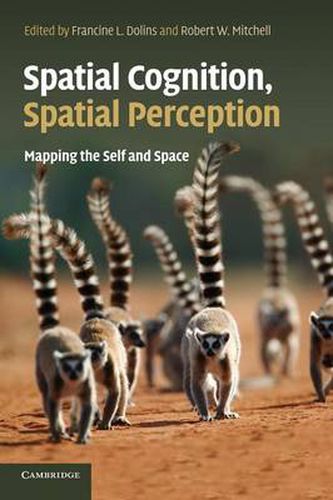Readings Newsletter
Become a Readings Member to make your shopping experience even easier.
Sign in or sign up for free!
You’re not far away from qualifying for FREE standard shipping within Australia
You’ve qualified for FREE standard shipping within Australia
The cart is loading…






How does knowledge of the body in space relate to an understanding of space itself? Spatial cognition is discussed from two closely related perspectives: the internal mapping of external stimuli (e.g., landmarks and sensory perception of environmental information) and the internal mapping of internally perceived stimuli (e.g., kinesthetic and visual imagery), and their subsequent effects on behaviour. Clarification of what spatial information is present in most perceptual processes and how this is used cognitively in relation to the self in space is then established. Major points and controversies of the various models are discussed, along with evolutionary perspectives of spatial perception and object recognition and comparisons between human and non-human spatial cognitive abilities and behaviours. Written for postgraduate students and researchers, the authors present theoretical and experimental accounts at multiple levels of analysis - perceptual, behavioural and cognitive - providing a thorough review of the mechanisms of spatial cognition.
$9.00 standard shipping within Australia
FREE standard shipping within Australia for orders over $100.00
Express & International shipping calculated at checkout
How does knowledge of the body in space relate to an understanding of space itself? Spatial cognition is discussed from two closely related perspectives: the internal mapping of external stimuli (e.g., landmarks and sensory perception of environmental information) and the internal mapping of internally perceived stimuli (e.g., kinesthetic and visual imagery), and their subsequent effects on behaviour. Clarification of what spatial information is present in most perceptual processes and how this is used cognitively in relation to the self in space is then established. Major points and controversies of the various models are discussed, along with evolutionary perspectives of spatial perception and object recognition and comparisons between human and non-human spatial cognitive abilities and behaviours. Written for postgraduate students and researchers, the authors present theoretical and experimental accounts at multiple levels of analysis - perceptual, behavioural and cognitive - providing a thorough review of the mechanisms of spatial cognition.